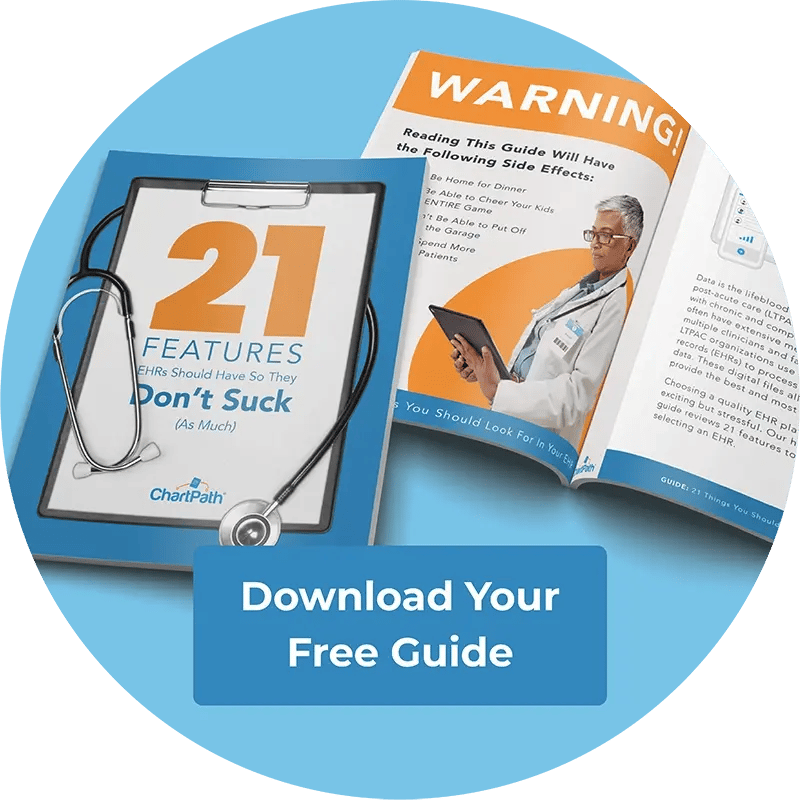How EHR Systems Support the CMS GUIDE Model

The United States is seeing an increase in its aging population, which brings an uptick in the number of people living with dementia. An estimated 6 million Americans currently live with the condition, which contributes to approximately 100,000 deaths per year.
Existing healthcare models make diagnosing and treating dementia challenging, particularly in low- and middle-income communities. In 2024, the Centers for Medicare and Medicaid Services (CMS) launched the GUIDE model to improve dementia care. This model takes a more thorough approach to dementia care with an emphasis on coordinated care teams, along with providing support and training for family members and friends caring for loved ones.
The right technology can help organizations participating in the GUIDE model elevate dementia care. A coordinated approach to care leads to better patient outcomes and higher quality of life for both patients and their loved ones.
The GUIDE Model and Its Care Goals
At its core, the GUIDE model aims to personalize dementia care. Its primary goal is to make coordinated care more accessible for all dementia patients while reducing poor outcomes such as high rates of hospitalization and frequent emergency department visits.
As part of the model, participating organizations assign a Care Navigator to each patient. This role involves coordinating care across multiple disciplines and offering training and educational support to friends or family acting as caregivers.
If your practice is participating in the GUIDE model, you need detailed records to demonstrate that you’re meeting CMS requirements. For participants, CMS adjusts payment for services based on how you meet various performance metrics. Supporting documentation is crucial to prove you’re offering coordinated, high-quality care to your patients.
EHR Systems: The Backbone of GUIDE Model Implementation
EHR systems and the GUIDE model of dementia care go hand in hand. This technology makes it easier to coordinate care across a potentially large team. Anyone on a patient’s care team can access records to monitor medications, assess disease progression, and make data-driven care decisions.
The GUIDE model requires participants to conduct regular Health-Related Social Needs (HRSN) screenings. As a participating organization, you will assess lifestyle factors that could impact your patients’ dementia, such as access to food, housing, transportation, and utilities. You also need to submit an annual progress report so CMS can see how the program is meeting its goals.
Your EHR system can help you document your patients’ progress and prove compliance with CMS requirements. With care plans and visit notes stored in one centralized location, you can easily compile and submit the necessary information.
EHR features like alerts, logs, and metrics align with GUIDE objectives. Alerts help you manage a patient’s medication and send out appointment reminders, ensuring each patient receives consistent care.
Interoperability and Data Sharing
Patients with dementia often have other conditions, such as diabetes and hypertension. Due to the multiple symptoms associated with dementia, your patients need a team of specialists to manage their behavioral, physical, and mental health.
Using EHR systems compatible with those of other facilities involved in your patient’s care allows for seamless coordination. You can transfer patient notes and records to specialists, ensuring each provider has a complete view of the patient’s condition. This enables them to make timely treatment decisions and adjust care plans as needed.
If your practice also offers in-home services, your caregivers can access multiple patient records from each member of the care team. Patients with dementia benefit from consistent routines, and the right technology can help you provide this through expertly coordinated care.
Benefits of EHR Tracking for GUIDE Model Success
As a participant in the GUIDE model, your practice can benefit from EHR tracking as you manage your patient load throughout the program’s eight-year testing cycle.
Streamlined Workflows for Providers
EHR features help reduce the amount of time caregivers spend on paperwork. Your team can automatically retrieve information from a patient’s chart, allowing them to focus on the visit itself. Some EHR platforms also offer tools for HRSN screenings, so you can complete them and easily attach them to your patients' records.
These and other EHR features free up your caregivers to spend more time with patients. This extra time with patients helps your caregivers make more accurate notes, particularly if a patient’s condition seems to be deteriorating.
Improved Caregiver Engagement
With access to a patient’s full medical record in one place, your caregivers can engage with their patients with accurate information in hand. Instead of repeatedly asking the same questions at each visit, your care team can focus on the patient’s present condition and adjust the care plan as needed. This makes each visit more valuable for both the patient and the caregiver.
Real-Time Reporting and Quality Measurement
Under existing dementia care models, patients often end up in the emergency department due to issues such as injuries from falls, behavioral problems, and infections. The GUIDE model emphasizes frequent, coordinated care, helping to reduce these ER visits. With your team able to report changes to a patient’s condition in real-time, the care navigator can involve a specialist before the patient ends up in the hospital.
How Providers Can Get Started
If you’ve already been accepted to participate in the GUIDE model, integrate workflows into your EHR system. Make sure you are using Certified Electronic Health Record Technology (CEHRT) approved by CMS.
Choose a platform that is compatible with other specialists to standardize data entry and easily share records. Incorporate HRSN questionnaires into your workflows, so your team remembers to conduct them regularly.
EHR platforms specialized for long-term post-acute care, such as ChartPath solutions, help you coordinate care for dementia patients. As an LTPAC specialist, you know that your patients are often dealing with multiple conditions, which complicates medical tracking.
An EHR tailored to LTPAC helps you monitor all of a patient’s symptoms and medications. It also makes it easier for you to coordinate care across a team of specialists so you are treating and documenting a patient’s psychological, physical, mental, and sociological needs.
These platforms also offer documentation that can be easily submitted to CMS during your annual progress reporting period. Schedule a demo today to learn how our EHR solutions can help you implement the GUIDE model for dementia care.
Blog Post Tags
GUIDEGet Awesome Content Delivered Straight to Your Inbox!
Posts by topic
- EHR
- Better Charting
- LTPAC
- AI
- RCM
- Compliance
- Healthcare Trends
- Press Release
- GUIDE
- reporting
- Artificial Intelligence
- Assisted Living
- Automation
- Behavioral Health
- Business
- Events
- General
- MIPS
- Operations
- Patient Outcomes
- Physician Billing Services
- Population Health Management
- Resumption of Care
- SNF
- TCM
- Value Based Care
- eCR
- interoperability
- partners
- regulations
- regulatory See All See Less




